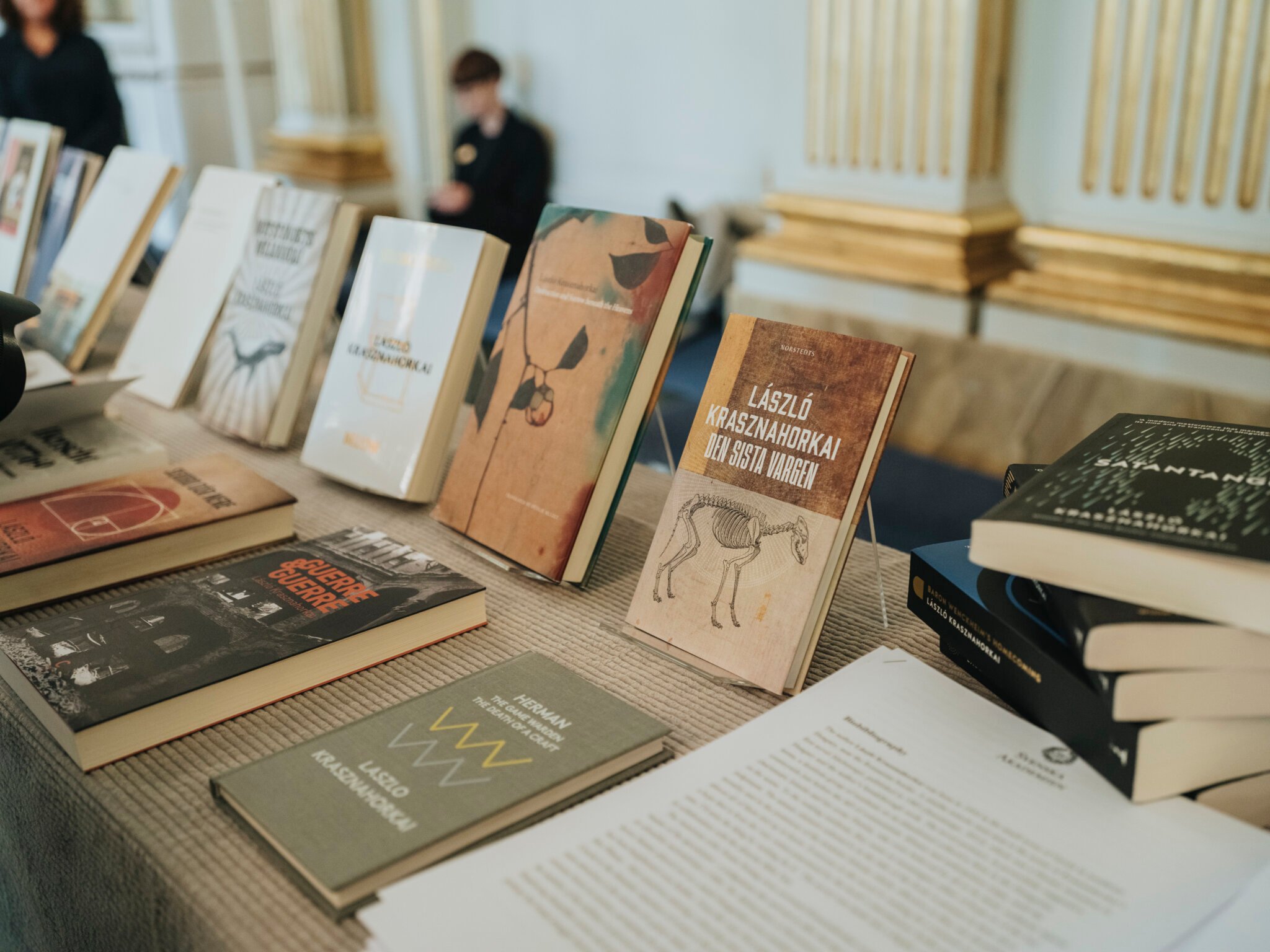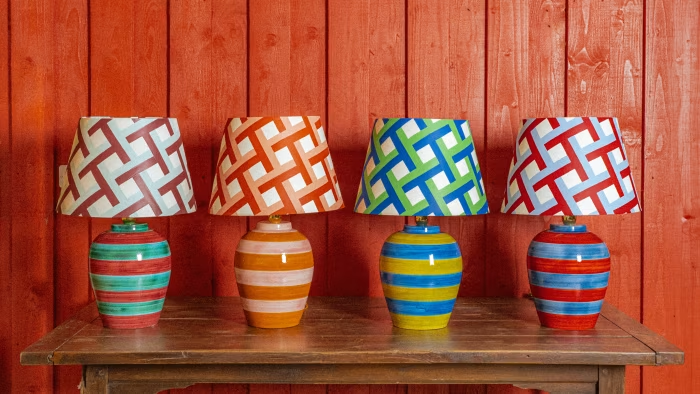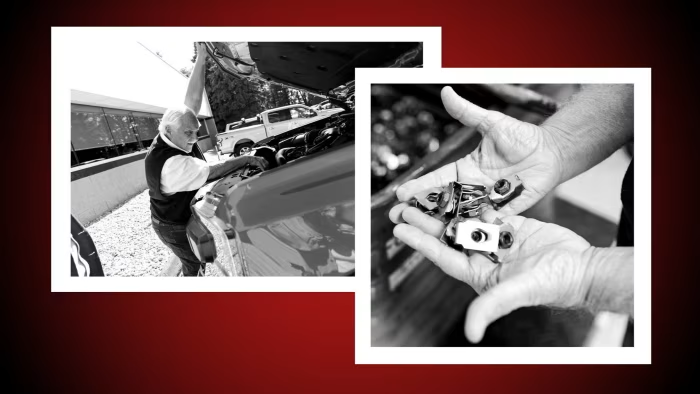…
Blog
-

What to read: László Krasznahorkai
Curious about 2025 literature laureate László Krasznahorkai but unsure which of his books to pick up first? Here members of the Swedish Academy give their recommendations.
Satantango…
Continue Reading
-

Robin and Ecklund Advance to Doubles Round of 16 at ITA Regional Championships
WEST LAFAYETTE, Ind. – On the third day of the Intercollegiate Tennis Association (ITA) Ohio…
Continue Reading
-

Could heart attack symptoms be mistaken for ‘gas’ issues? Max Hospital cardiologist explains
Symptoms of heart attacks are often misinterpreted as sudden chest pain, pressure, or the classic “elephant on the chest.” Many people ignore subtle signs such as bloating, gas, or indigestion, assuming it’s just digestive issues. However,…
Continue Reading
-

World Arthritis Day: Orthopedist lists 5 reasons why women are at higher arthritis risk, says hormones and hips matter
Arthritis, a condition that causes inflammation and stiffness in the joints, affects millions of people worldwide, but it disproportionately impacts women. Studies show that women are nearly three times more likely than men to develop certain…
Continue Reading
-

Selvaraj, Schwartzman Advance to Quarterfinals at ITA Texas Regional
FORT WORTH — Rice’s Nithesa Selvaraj and Darya Schwartzman each advanced to the quarterfinals in singles play Saturday at the ITA Texas Regional, hosted by TCU.Selvaraj defeated Addison Yang Comiskey 6-2, 7-3 before outlasting Yekaterina…
Continue Reading
-

How to Get Shiny Solosis, Shiny Duosion, and Shiny Reuniclus in Pokemon GO: Shiny Odds, Appearance, Best Tips, and More | Esports News
Completing the Shiny Solosis family in Pokemon GO – featuring Solosis, Duosion, and Reuniclus – requires careful timing, strategy, and participation in special events like the October 2025 Community Day. US economy myFT Digest — delivered directly to your inbox.
The writer is an adjunct professor at NYU School of Law and former head of North America for CIC, China’s sovereign wealth fund
In February, President Donald Trump directed the Treasury and commerce secretaries to develop a plan for a US sovereign wealth fund.
Although such a fund has yet to be established, the government’s acquisition in August of a 10 per cent equity stake in US chipmaker Intel demonstrates that active state participation in industrial sectors of strategic importance to national security is part of an increasingly clear and focused strategy.
The commerce secretary Howard Lutnick said at the end of September that the administration’s aim is to “get chip manufacturing significantly onshored”. And on Monday, the government announced it would take a 10 per cent stake in Canadian mining company Trilogy Metals in a bid, as the secretary of the interior Doug Burgum put it, to secure the supply of critical minerals.
The Trump administration’s equity-for-grants deal with Intel did three things, each of which sheds light on America’s evolving industrial strategy.
First, it sent a market signal that the US is committed to Intel’s long-term prospects. The company is the country’s best chance to compete with Taiwan Semiconductor Manufacturing Company and Korea’s Samsung in chip fabrication.
Second, the stake was a “poison pill” to dissuade the company from fully exiting the manufacturing sector. TSMC is the dominant player in chip manufacturing, especially advanced artificial intelligence chips, so Wall Street may advise Intel to focus on chip design instead. But Intel pulling out of manufacturing would be detrimental to the government’s efforts to shore up domestic chip making for reasons of supply-chain stability.
Third, the Intel deal was clearly intended to “crowd in” further public-private partnership. Within days of the US government taking its stake, Japan’s SoftBank announced its own $2bn investment in Intel, followed by Nvidia’s $5bn design and manufacturing partnership with the company.
However, even the $8.9bn of US funding, plus SoftBank’s $2bn, will not fully finance Intel to build up its AI chip manufacturing capacity. It may need to invest $10bn in each of the next five years if it is to succeed at making leading-edge chips.
Intel’s plan to open a new manufacturing facility in Ohio, for example, has been repeatedly delayed, not only because of the company’s financial troubles, but also its lack of AI chip manufacturing orders from the biggest customers.
US government funding alone wouldn’t address all of Intel’s problems, which is why Nvidia’s decision last month to invest $5bn in its struggling rival as part of a deal to develop chips for PCs and data centres is so significant. This partnership not only provides Intel with a critical revenue pipeline but also creates a demonstration effect: if the world’s dominant AI chip designer entrusts Intel with responsibility for manufacturing, it could catalyse further private market capital to invest in a company seen as vital to US technological sovereignty.
Will the US approach succeed? It’s worth comparing these recent ad hoc efforts to boost chip manufacturing in America with China’s National Integrated Circuit Industry Investment Fund, which demonstrates Beijing’s ambition to build a competitive domestic foundry ecosystem. After significant investment by NICIIF in Shanghai-based Semiconductor Manufacturing International Corporation, the company now makes advanced AI chips for Huawei, and is striving to catch up with TSMC as well.
Both the US and China have decided that they can’t afford to outsource their chipmaking future. Technological sovereignty is their common destination, and they are resorting to the same kind of strategy, albeit with their own distinctive characteristics, to get there.
Continue Reading
-

Ready for some light entertainment?
Unlock the Editor’s Digest for free
Roula Khalaf, Editor of the FT, selects her favourite stories in this weekly newsletter.
Sometimes a room requires a full overhaul, and sometimes it just needs a judicious tweak. If colour drenching your living…
Continue Reading
-

Donald Trump’s tariffs drive US car sector into turmoil
Last March, Team 1 Plastics, a Michigan car parts supplier, ordered a $300,000 injection moulding machine from Japan. By the time it arrived, US President Donald Trump’s tariffs had pushed the price up 15 per cent to $345,000.
“That’s real money where I come from,” said Gary Grigowski, Team 1 Plastic’s vice-president and co-founder. “It’s a cost that has to be recovered somehow.”
Trump’s tariffs were supposed to boost the US car industry. They would shield it from foreign competition, correct trade imbalances and promote the reshoring of jobs outsourced to Asia, according to the White House.
Instead they have thrown the sector into turmoil. Ford, General Motors and Stellantis — the Big Three — are forecasting a combined $7bn tariff-related hit to their earnings in 2025, while the thousands of companies that supply them are reeling from disrupted supply chains, reduced cash flow and higher product prices.
The negative consequences are palpable throughout the state of Michigan, home to more than 1,000 car parts suppliers making everything from powertrains and steering columns to windshield wipers and door handles.
“There’s definitely distress,” said Patrick Anderson, head of Anderson Economic Group, a Michigan-based consulting firm. “And the full effect of tariffs hasn’t even hit yet.”
Gary Grigowski, vice-president of Team 1 Plastics, said there was no alternative to the $345,000 Japanese machine he bought earlier this year © USA Today Network/Reuters Connect Michigan’s industrial capital is Detroit, the historic birthplace of the US car sector. Ever since Henry Ford built the world’s first moving assembly line there in 1913, it has been an emblem of the US’s technological and manufacturing prowess.
But that prowess is based on supply chains that are complex and global — and will be hard to replace.
“As much as we want to build walls around ourselves here and live in this protected box, it’s impossible,” said Mary Buchzeiger, chief executive of Lucerne International, which forges and casts vehicle components 30 miles outside Detroit.
“We just don’t have the manufacturing footprint any more . . . to produce everything we need to consume here in the US.”
Suppliers have watched with concern as the Big Three reel from the upheaval caused by tariffs, particularly the 25 per cent levy on imported car parts. “This is a $2bn headwind that really restricts our future investment,” Ford chief executive Jim Farley said last month.
“The automotives are bleeding, and the question is, if they don’t survive, what does it look like for the rest of us?” said Lisa Lunsford, chief executive of GS3, which makes aluminium and steel alloy parts.

Carrin Harris, chief executive of Blitz Proto, said: ‘Costs were changing on a day-to-day basis due to fluctuations in tariffs’ © Sylvia Jarrus/FT One victim of the tariff regime is AlphaUSA, a Detroit-based group that makes precision metal components. Chuck Dardas, president, said the company is incurring additional costs of $250,000 a month because of the 50 per cent tariff it pays on steel nuts it imports from Taiwan — a lot for a company with annual sales of $65mn.
“This is existential for a company our size,” Dardas said.
Already, some players have gone to the wall. In June, Japan’s Marelli, a big supplier to Stellantis and Nissan, filed for bankruptcy protection in Delaware. Its chief executive said it had been “severely affected” by US tariffs.
Gretchen Whitmer, Michigan’s Democratic governor, has at times sounded sympathetic to Trump’s approach to trade, bemoaning “decades of offshoring and outsourcing” that “shipped hundreds of thousands of good-paying, middle-class jobs overseas”.
But she has also lamented the tariff-related uncertainty that has prompted some companies to scale back or consider moving production overseas. “Dangerously ironic, the national tariff chaos does the opposite of the administration’s goal — companies are cutting, not creating jobs in Michigan,” she said.
Glenn Stevens, executive director of MichAuto, a lobby group, said the industry’s situation is “unprecedented”. “We’ve been through a lot of inflection points, but I don’t think I’ve ever seen anything like the dynamics at play here,” he said.
Tariffs are just the latest setback for a sector bedevilled by disruption. First came a pandemic that jolted global supply chains. Then, a slump in demand for electric vehicles threw carmakers’ expansion plans into disarray. Now, they face a growing threat from Chinese rivals challenging their global dominance in traditional markets.
“Our industry is already a mess, and [the tariffs] are a mess on top of a mess,” said Buchzeiger. She said Lucerne International is paying a 72.5 per cent tariff on the goods it produces in China and imports to the US.
Suppliers say the worst aspect of the new policy is its haphazard nature. Pat D’Eramo, chief executive of Martinrea International, a Canadian parts supplier with engineering facilities in Michigan, cited the US government’s shock decision in August to expand the steel and aluminium derivative products subject to import levies
“That drove some commodity prices up as much as 400 per cent,” said D’Eramo.
The tariffs have created anomalies that, to many, seem illogical. D’Eramo said Martinrea pours stainless steel in Indiana which it sends to Canada to be made into tubes. “When it comes back we have to pay a tariff on both the stainless steel — that was American-made — as well as the tube,” he said. “There’s some slop in the system.”
Suppliers are in the painful position of having to pay the tariff upfront and then wait to be reimbursed by their customers — a process that cuts into cash flow and vastly increases their working capital costs.
AlphaUSA’s Dardas is negotiating with his customers to receive compensation, but some carmakers are refusing to pay all the tariff-related costs incurred by their suppliers. “I won’t be having this conversation with you this time next year if we don’t get recovery,” he said.

Lisa Lunsford, CEO of GS3, said: ‘The automotives are bleeding, and the question is, if they don’t survive, what does it look like for the rest of us?’ © GS3 Some big car companies have demanded suppliers source more of their raw materials and parts in the US, but that can be hard to do.
Dardas said he approached several US manufacturers of nuts but “99.9 per cent of the time” the price they quoted was higher than the cost of the Taiwanese product, even including the tariff.
Grigowski said Team 1 Plastics had the same problem: there was no alternative to the $345,000 Japanese machine he bought earlier this year. “Seventy per cent of injection moulding machines are imported,” he said.
The smaller the company, the greater the disruption can be. Carrin Harris, head of Blitz Proto, a three-person prototyping firm in Farmington Hills, Michigan, said the price of the stainless steel components it uses rose 21 per cent between April and September. Other parts are now 50 per cent more expensive than before the tariffs.
That has wreaked havoc on the company’s price estimates. In the past, any quote it made for a job was valid for 30 days, she said. Now, it expires after a week. “Costs were changing on a day-to-day basis due to fluctuations in tariffs,” she said. “[So] there’s no way we can accurately determine what the cost is going to be anymore.”
While the levies have not fed into car prices, analysts say it is only a matter of time — especially once dealers exhaust pre-tariff inventories.
Gabriel Ehrlich, an economic forecaster at the University of Michigan, predicts the price of domestic and imported vehicles will increase 9.6 per cent on average over the several years it takes supply chains to adapt to Trump’s tariffs.
“Using 2024 prices this would raise the average cost of a vehicle by roughly $4,500 if profit margins stay the same,” he wrote in September.
Ehrlich said he also expects tariffs to trigger a decline in domestic car production, with the output of light vehicles falling by 313,000 units, or 3.1 per cent, annually. Light vehicle sales will fall by nearly 780,000 units a year and exports by 320,000 units, he predicted.
The levy on imported steel and aluminium is a key driver of the cost increases that have hit the industry, he added.
“Overall there’s a net cost to the state of Michigan, because those are major inputs into cars and light trucks,” Ehrlich said.
Meanwhile, car parts suppliers yearn for more stable times. “When are we going to get a break?” said D’Eramo of Martinrea. “Because it’s been five years of battle after battle and our margins have shrunk throughout all of this.”
Continue Reading


